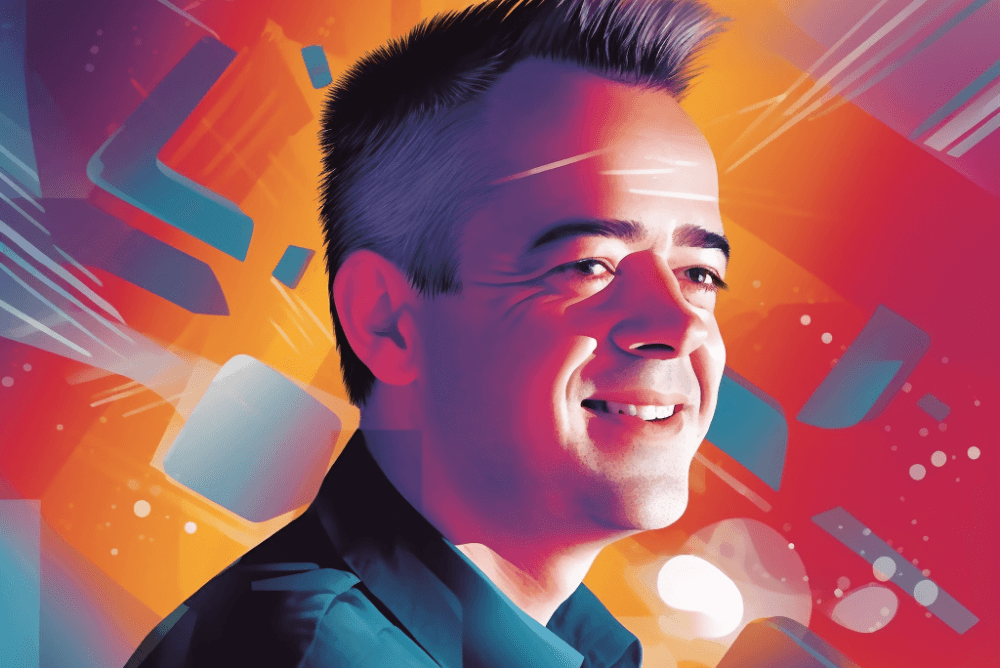Technology and values aligned: Swedish Radio's innovative approach to news curation
27 Jun 2023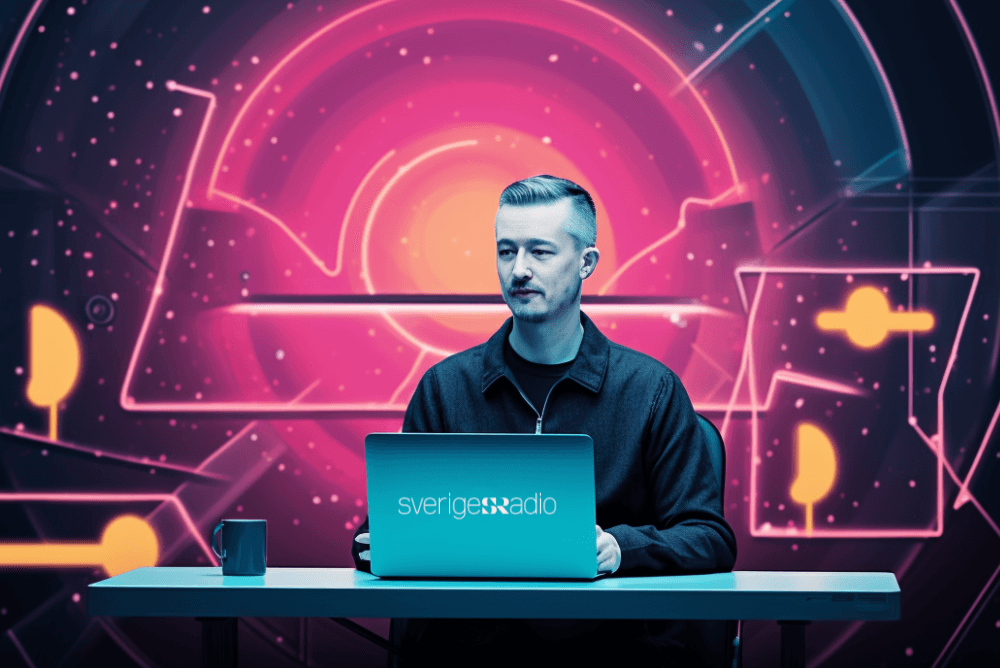
Olle Zachrison shares 5 insights from Swedish Radio's newsroom
Written by Joanna Kocik, content specialist at Autentika
Olle Zachrison, News Commissioner at Swedish Radio, shares 5 examples of how the public broadcaster redefines the audio news production, curation, and consumption in today’s digital world.
Olle Zachrison is a News Commissioner at the Swedish Radio (SR). He leads SR's work on news strategy for all platforms and commissions news content from the 33 newsrooms across Sweden. Olle is also a co-founder of the Nordic AI Journalism Network, an industry network with more than 280 members from all Nordic countries exchanging ideas on how to strengthen journalism with artificial intelligence in a responsible and transparent way.
Olle shared some recent innovations at Swedish Radio and told us how a public radio broadcaster navigates the ever-changing digital world.
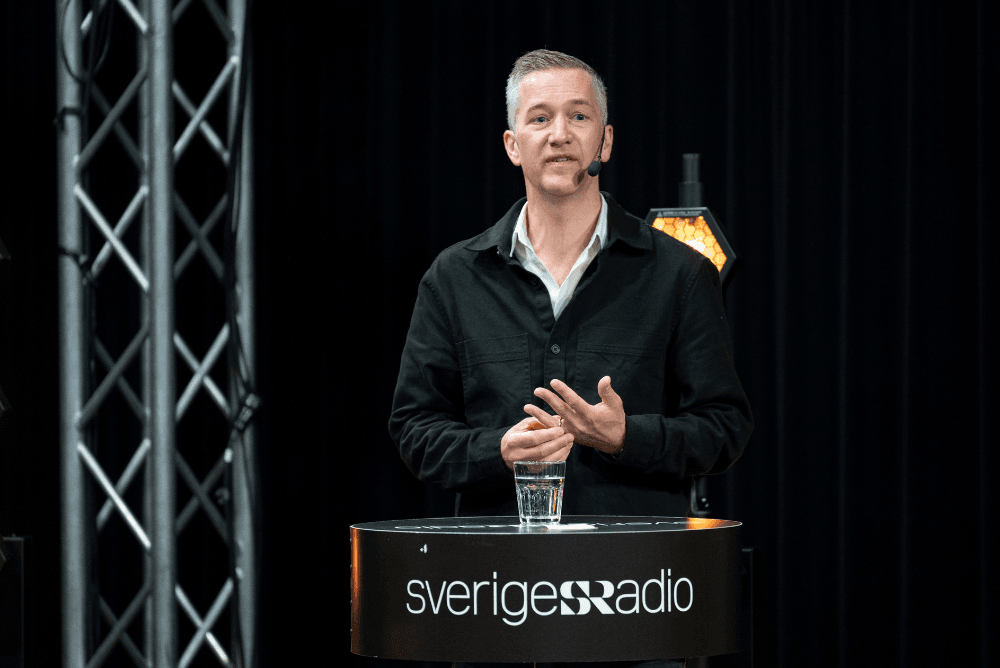
Olle Zachrison, News Commissioner at Swedish Radio
1) Customisation and flexibility of back-end systems
Swedish Radio has embarked on a journey to unify its back-office systems and create one cohesive editorial ecosystem. In recent years, the broadcaster has used external software for news production and a separate, homegrown content management system for publishing digital content. Now, Swedish Radio is rolling out its own broadcast system for better integration, flexibility and security of both structures. "For us, it's better if we can control both systems ourselves, not to mention the cost optimisation," says Olle Zachrison.
He points out that Swedish Radio chose a custom CMS because of its specific strategy. "We have 55 offices and 26 local stations across Sweden, and we do a lot of live broadcasts from different locations. This is why it was important that our journalists could report live in good quality from any place. Most content management systems on the market are unsuitable for this kind of strategy, and we needed a system that met our specific requirements. We also didn’t want to rely on external providers," explains Olle.
Read also: How to choose a text editor for a digital-first newsroom?
2) Audio-first strategy supported by automation
With a strong focus on audio content, Swedish Radio prioritises an audio-first strategy across all platforms. Its digital offering revolves around a concept where news clips are treated like songs in a Spotify playlist and updated around the clock.
"We use an editorial algorithm to put the clips in a certain order, and we have playlists for local news, national news, sports, science, culture, etc. Like any traditional radio station, we broadcast a lot on a set schedule, but we have also added a live news team that goes live quickly when there is breaking news. At the same time, we start a live stream in our app and send a push notification to users. When a user clicks on the notification, they are taken directly to the live audio stream," says Olle.
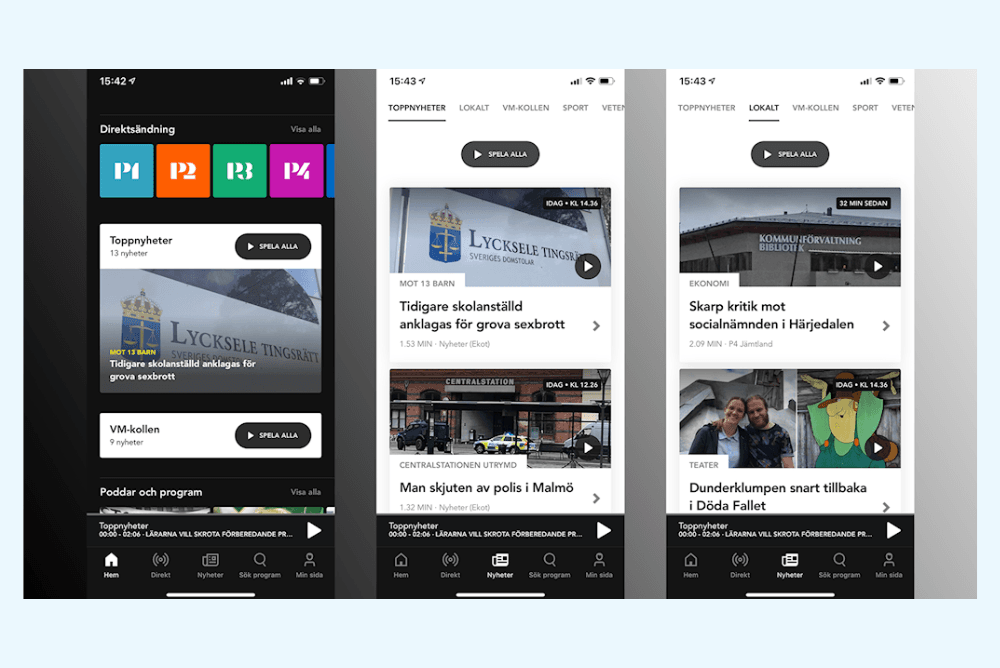
News clips in Swedish Radio app are treated like songs in a Spotify playlist and updated around the clock (image by Swedish Radio)
3) Bringing technology and values together
Swedish Radio produces about 350 news clips daily, which human editors evaluate according to three criteria: general news value, distinct public service value, and lifespan. In this way, the broadcaster aims to provide news that aligns with their vision of more voices and powerful stories for greater understanding.
"The overall news value is the story's magnitude: is it small or extraordinary? The second dimension is particularly important because it relates to our mission as a public broadcaster: We want to be pluralistic and give a voice to people with different perspectives.
Finally, the third dimension – lifespan – describes how long a story will last: A minor traffic accident has a short lifespan, while an investigation about a high police chief can last weeks or months," Olle explains.
These three dimensions are assigned through metadata tags associated with each piece of content. Based on this, the algorithm decides where the story should appear in a news playlist and on the website. Crucially, this relationship between human judgement and technology works. Analysis shows that stories that include Swedish Broadcasting's unique public service values achieve 28% more engagement.
In 2021, the News Values project was awarded the European Broadcasters Union (EBU) Technology & Innovation Award.
4) Personalisation and geographic relevance
While Swedish Radio's news playlists are primarily curated based on their editorial algorithm, they also offer some personalisation options. Users can choose their location to receive a separate playlist of news clips from that area. In addition, SR has prototyped a more personalised mixed playlist that allows users to select specific news sources or topics of interest. While this feature is not yet in production, it underscores the commitment to customise the news experience to individual preferences.
"We also give our listeners personalised podcast recommendations based on the AI system (provided by the EBU) called Peach. At its basic level, it's a recommendation engine, but it's also a self-learning system that improves over time," Olle says.
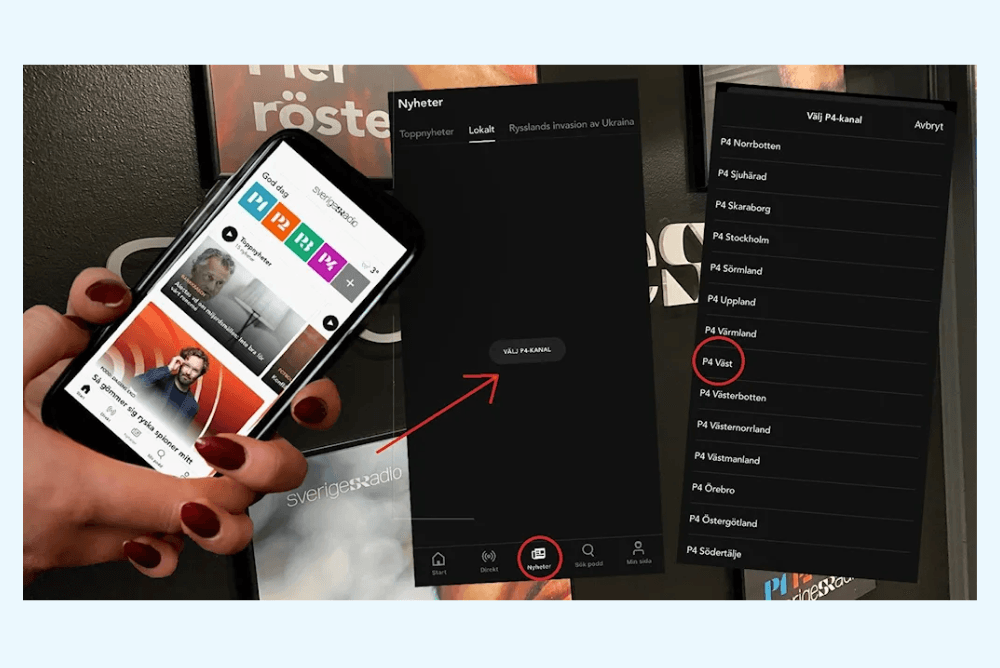
Swedish Radio's news playlists offer personalisation options, based on the user's location (image by Swedish Radio)
5) Pilot innovations
Swedish Radio's focus on media innovation and digital transformation manifests itself in other initiatives, such as the automatic transcription of news clips thanks to an internal system based on AI technology. The broadcaster is also experimenting with synthetic speech technology in some pilot projects (currently used in the SR to guide listeners from one clip to the next).
Another innovation Swedish Radio is working on is automatic tag extraction within the transcription system. This feature uses natural language processing (NLP) techniques and algorithms to automatically identify and extract key terms, entities, or topics from the transcription, improving searchability and allowing for easier categorisation and indexing of specific information within the transcriptions.
"We are also working on some innovations related to audio car systems and time-shifted radio, which allows rewinding and accessing previously aired content, including songs and broadcast news," Olle mentions.
Read also: Let’s cut through the noise: Which AI tools in journalism are really worth the hype?
Conclusion
We asked Olle whether innovating as a public broadcaster is more difficult. As he said, private organisations often have a lot of development power and want to scale quickly, but on the other hand, the fact that you are a commercial publisher or a public broadcaster does not decide whether you have a culture of innovation.
"Sometimes I think some private media are stuck in the 19th century," Olle laughs. He also points out that it depends on business priorities and whether you want to increase revenue or work on editorial values.
"It's all a matter of strategy. Being a public broadcaster can be an advantage because we do not have to worry so much about commercial development. Also, it's phenomenal that we have a network of public broadcasters in Europe. We are 40,000 journalists, so it's a pretty big force if we combine our potential. On the other hand, we have to maintain higher security standards, and we cannot always compete with private companies for talent in terms of salaries. So I would say that public service broadcasting has advantages and disadvantages - like most things in life," Olle concludes.

